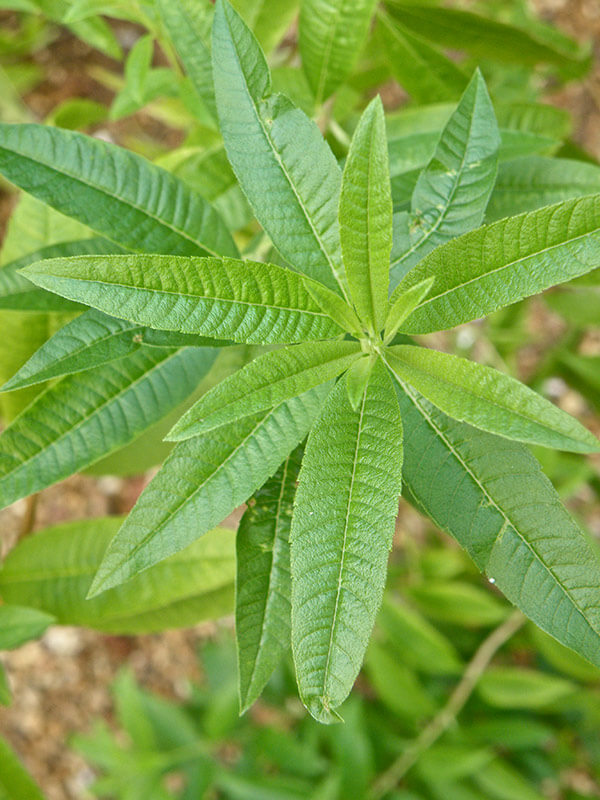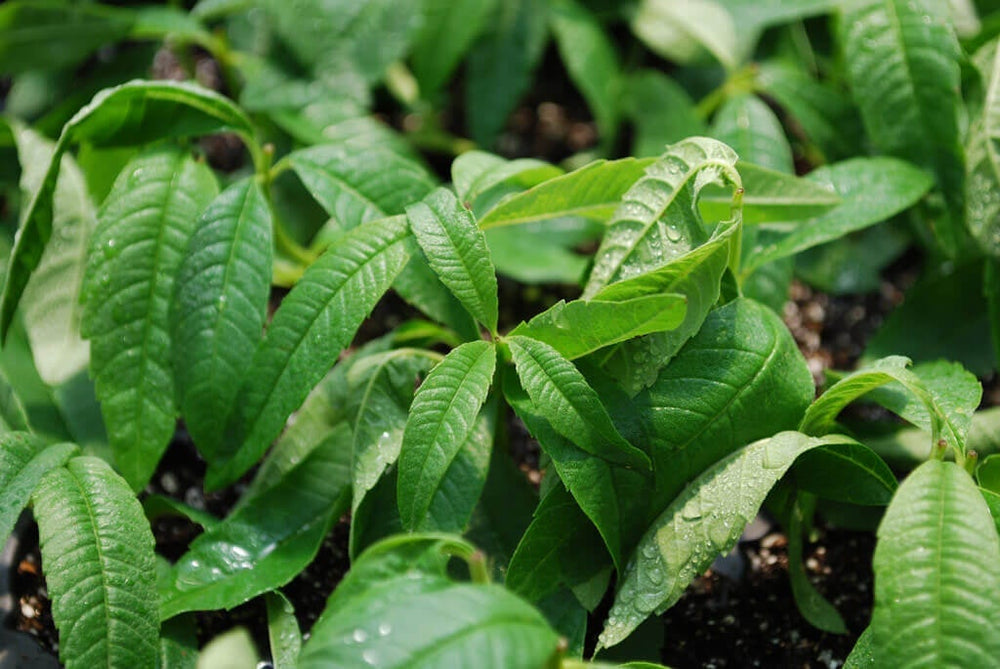Lemon verbena offers a sweet lemon flavor that's refreshing in tea or desserts and useful for seasoning meat dishes. The plant is a beauty in the landscape, forming an elegant shrub 6 feet tall by 8 feet wide. Leaves release their refreshing fragrance each time they're touched, making this herb a good choice for planting near outdoor living areas or paths, where you can enjoy its lemony scent. A native of tropical climates, lemon verbena is perennial in frost-free areas. To savor the flavor in regions with cold winters, try growing lemon verbena in a container you can carry indoors.
Note: While we do not currently carry this variety, we offer this information for gardeners who wish to grow it.
Quick Guide to Growing Lemon Verbena
- Lemon verbena loves warm weather, so plant it in spring after the last frost.
- Space lemon verbena plants 12 to 18 inches apart in an area with full sun and fertile soil with excellent drainage; container growing is a great option.
- Boost the nutrients in your native soil by mixing in several inches of aged compost or other rich organic matter.
- Encourage impressive leaf production by regularly feeding with a water-soluble plant food.
- Check soil moisture regularly and water when the top 2 inches of soil are dry. Roots do not like being constantly wet.
- If your lemon balm gets beat up by the elements or is looking tired, trim back 1/3 of it and watch it grow back twice as thick.
- Harvest lemon verbena leaves anytime once they are large enough to use.
Soil, Planting, and Care
Plant lemon verbena in loose, well-drained soil rich in organic matter. Drainage is a key to success with this herb, which will die if roots stay constantly wet. If you're growing lemon verbena in a container, choose one at least 12 inches in diameter to give roots room to spread and fill it with a premium potting mix such as Miracle-Gro® Potting Mix. A larger pot also insulates roots somewhat against soil temperature changes. Burying the container in the ground provides the best insulation for roots, but it's a risky choice. If plants root into surrounding garden soil, when you remove the container in the fall, severing the roots will likely trigger leaf drop. Full sun yields best growth and the most flavorful leaves, although plants in southernmost and desert regions benefit from light afternoon shade. In Northernmost areas, siting a plant near a white wall or fence will surround the plant with reflected light, which enhances growth. If plants receive more shade than sun, stems will be spindly and sprawling and leaves will lack strong essential oil levels. Lemon verbena is a heavy feeder and, unlike many herbs, benefits from frequent fertilization. In early spring and throughout the growing season, fertilize lemon verbena with Miracle-Gro® Performance Organics® Edibles Plant Nutrition. Be sure to follow label directions.
Lemon verbena typically drops its leaves when temperatures dip below 40 degrees F, entering dormancy. It's possible to overwinter lemon verbena outdoors in zone 8 and warmer, but it's wise to help plants harden off. To do this, reduce watering a few weeks prior to the typical onset of below-freezing temperatures.
In Northern zones, carry plants indoors before cold weather arrives, or wait until a cold snap causes the plant to drop leaves, then move it indoors. Most likely, the move from outside to inside will cause the plant to drop all its leaves. Many gardeners let the weather trigger leaf drop to avoid indoor clean-up and prevent carrying insects inside. Thin plants before bringing indoors, removing spindly stems. Save these stems to dry and scent dresser drawers and closets.
Avoid overwatering dormant (leafless) plants. This is a common way gardeners kill lemon verbena, whether it's growing in planting beds or pots.
Troubleshooting
Spider mites and whiteflies adore lemon verbena. Some gardeners won't grow it because they feel this herb attracts those pests. Avoid carrying these pests indoors by allowing plants to stay outdoors until leaves drop.Lemon verbena drops its leaves prior to entering dormancy in the fall and also in response to stress. Situations that trigger leaf drop include root disturbance, an intense cold draft, quick temperature change, or transplanting. Plants also seem to enter dormancy in response to shortening day length. During dormancy, don't overwater plants. New growth typically emerges eventually (in spring for overwintering plants).
Harvest and Storage
Harvest leaves as needed throughout the growing season. Each time you snip a stem, new growth will emerge at the whorl of leaves beneath the cut. This growth pattern makes frequent cutting necessary to keep stems from becoming leggy. To make a large picking, cut plants back by half. Dry leaves individually on screens or bundle stems together and hang upside down in a dark, dry place. Store dried leaves in sealed containers in a dark place. To release flavor, crumble leaves finely just before using. You can freeze lemon verbena, whole or chopped, in ice cube trays filled with water. You can also blend chopped leaves into softened butter. Store butter in an airtight container in the refrigerator for a few weeks, or form into balls and freeze on a cookie sheet. Store frozen balls in zipper bags, using them to flavor vegetables and fish or spread on bread or pancakes.



FAQs
What can I use lemon verbena for?
Use lemon verbena in recipes in place of lemon zest. Leaves are tough and leathery; mince them very fine with a food processor for consumption. Many times it’s easiest to use a whole leaf to season a dish and remove it before serving. Steep lemon verbena in hot water to brew tea or in milk to create a flavored base for ice cream, sorbet, or pudding. Bury a few leaves in sugar in a sealed container; use this sugar to flavor cookies and dough. You can also use leaves to flavor vinegar, salad dressing, or marinades. Add dried, crumbled leaves to rice just before serving or blend into quick bread batters. You can also use the leaves and stems to flavor an icing for our Lemon Verbena Tea Bread.




 Herbs
Herbs
 Vegetables
Vegetables
 Fruit
Fruit
 Flowers
Flowers
 Succulents
Succulents


